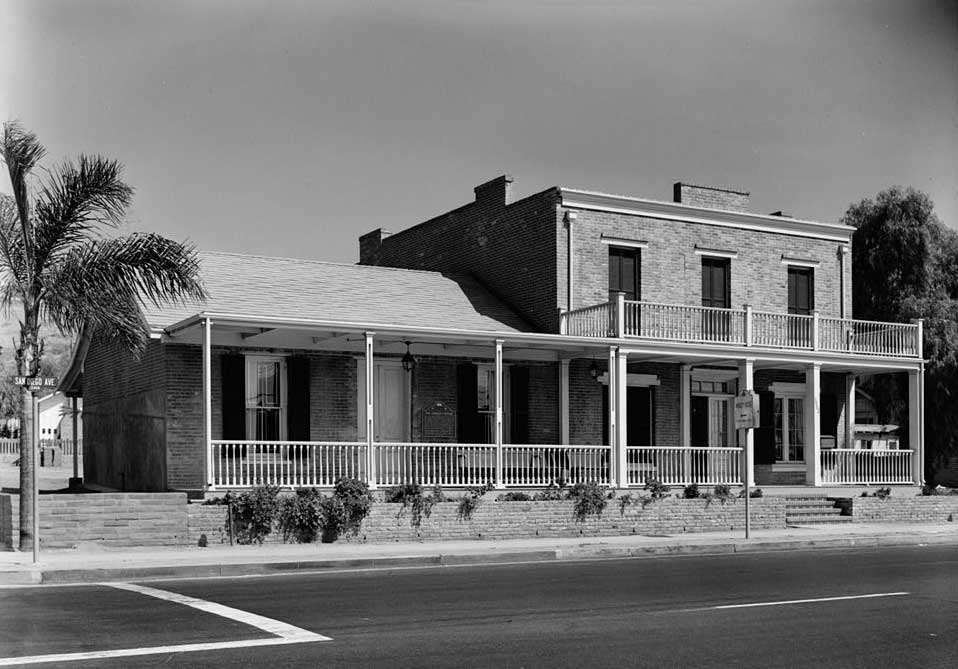A Brief History of Architecture in San Diego
Every city in the United States has a unique history, and we can glean crucial elements of the past and present in the area's architecture.
San Diego is no exception to this rule.
At first, under Spanish rule, then for 25 years under Mexican government, an Diego architecture took on the aesthetic popular throughout the villas, pueblos, and towns of rural Mexico.
The stucco-like shell and archways with tile and brick roofs were the tale-tell design of the area. The stucco style became popular again in the late 1980s and became a popular exterior coating from well into the 2000s. At the time of Mexican rule and the Pueblo style, the only buildings with garish decor were the interior of the monasteries that housed the artwork and gold prevalent throughout the empire.
Soon, in 1846 California and San Diego became incorporated as a territory and then a State in the United States.
The next style after the Mexican Puebla design fell out of fashion, and the iconic “fake front” style of building that is popularized in wild west movies became the predominant form of architecture in the region.
As the gold-rush era brought prospectors, their families, and entrepreneurs with them, the city began to shift and change to the ranch house style that was popular until post-World War Two.
During this time the craftsman style became popular throughout the downtown and North Park area of San Diego. The large front entrance and cement porch are the hallmarks of this type of architecture and many of these types of homes fall under the Mills Act, established in 1995 which is designed to preserve historic homes.

Many of these homes lacked any type of good insulation or heating, relying on old furnaces and chimneys, as well as open windows which can be uncomfortable at times to live in the house.
Understand that as a homeowner, the Mills Act is designed to preserve the historical integrity of the home, preserving ¾’s of the walls and exterior of the house.
For owners looking to better insulate and cool the home, the Mills Act can lead to difficulties when trying to renovate and upgrade the house, often increasing overhead for central air and insulation cost that for more modern homes are much cheaper and easier to get done.
Fast forward to the post-war era, and San Diego's architecture began to shift as the city grew.
Post-war architecture saw the post-war modern architecture become the dominant form throughout San Diego.
The style rejects the traditional neoclassical and Beaux-arts styles that were popular before WWII. The modern style included rethinking the shape and structure of the house, which consisted of long, rectangular homes with straight lines that incorporated the use of glass, steel, and reinforced concrete.
During this time, prefabricated homes began to become popularized, and that style accelerated through the coming years. It was during the 1960s and 1970s that San Diego saw its first wave of growth.
Flash back to the wild times and difficulties of the era; there was the Vietnam War, the Flower Power movement, Civil Rights movements, the resignation of President Nixon and subsequent pardon from President Ford. There was increased inflation and recession, including some major cities like New York City barely avoiding bankruptcy.
In general the only thing that was continuous during the time period was the prefabricated homes of suburban San Diego.
Slowly, the modern style became the postmodern era of architecture which can be seen all around San Diego, especially in the contemporary designs flourishing around La Jolla and Sorrento Valley. These contemporary modern designs in La Jolla is what makes the area unique and identifiable.
Unless renovating a home that falls under the Mills Act, most San Diego homeowners are able to remodel the home down to the studs and rebuild the structure to match the interests and popularity of current trends. When interested in remodeling, home owners can choose to remodel the entire home, renovate small spaces like a bathroom, or to upgrade fixtures and paint the interior to create a whole new look and feel.
Like every city in the United States, San Diego has an eclectic mix of architectural influences that represent the history and time period that the homes were built and renovated during. Driving down the streets a person is transported in time to a period where local and global events drove the types of designs and materials used in the houses that were produced.